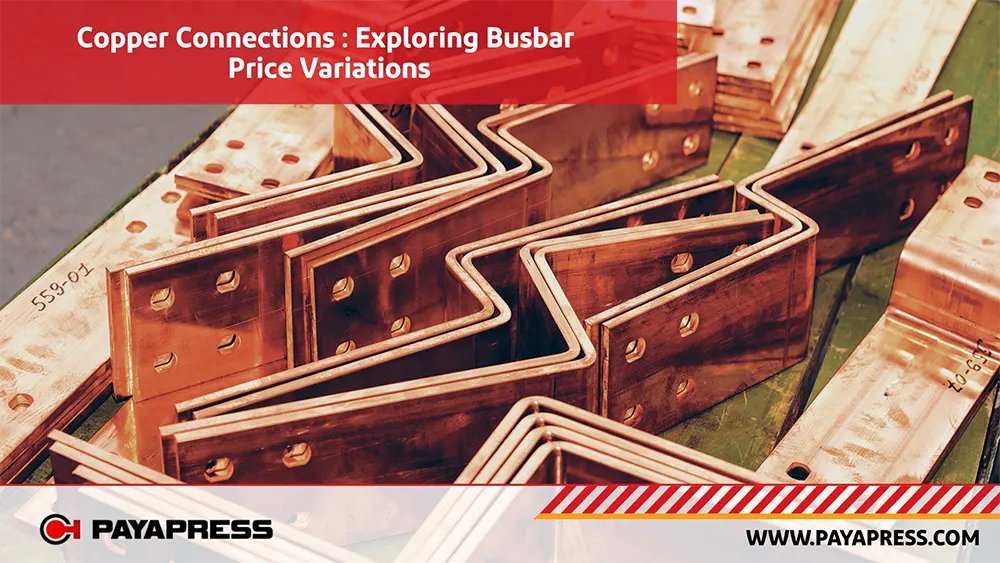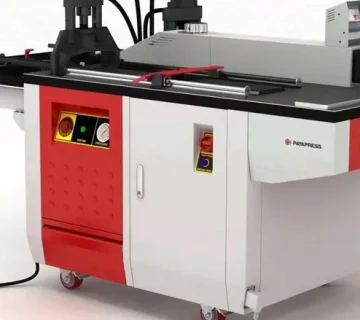In today’s industrial landscape, efficiency and precision are key factors for the successful execution of electrical projects. One integral component in this is the busbar—a conductor used for distributing power in electrical systems, especially in factories, data centers, and power plants. With the increasing demand for electricity and the growing complexity of electrical infrastructure, busbars have become crucial for ensuring safe and efficient electrical power distribution. However, one topic of great interest to buyers, engineers, and business owners alike is the busbar price. Variations in busbar pricing can be influenced by several factors, including the type of material, machine type, and the functionality of the machines involved in their processing. In this article, we will delve into the reasons behind busbar price variations and the role of advanced equipment like busbar bending machines, busbar punching machines, busbar cutting machines and other busbar processing machines in shaping these costs.
What Are Busbars?
A busbar is essentially a metal strip or bar used to carry large electrical currents. It is made from conductive materials such as copper or aluminum and is often used in switchboards, distribution boards, substations, and electrical panels. Busbars simplify the complex process of power distribution, ensuring that multiple electrical circuits can operate efficiently and safely.
The importance of the busbar cannot be overstated, especially when looking at sectors that require reliable and constant electricity supply. Its design allows for more compact and organized electrical panels, enhancing both safety and performance.
Factors Influencing Busbar Price
When discussing busbar price variations, it is essential to understand that several factors come into play. Let’s examine these key factors:
Material Type: Copper vs. Aluminum
The type of material used in manufacturing busbars greatly affects the busbar price. Copper busbars are more expensive than their aluminum busbar counterparts due to the superior conductivity, durability, and thermal resistance that copper offers. However, aluminum busbars are lighter and more affordable, which makes them a viable option in certain applications.
If your project requires premium electrical conductivity and long-lasting performance, copper busbars are the preferred option, despite their higher price. On the other hand, aluminum busbars are an attractive choice for projects that require cost-effective solutions without compromising on electrical safety.
Busbar Machine Type and Technology
The price of a busbar is closely linked to the type of equipment used in its production. Advanced machines, such as busbar bending machines, automatic punching machines, and busbar cutting machines, streamline the manufacturing process, reduce labor costs, and enhance precision. These machines vary in their capabilities, from manual or hydraulic options to fully automated CNC busbar processing machines.
– Busbar Bending Machines: These machines are essential for shaping busbars into desired forms for specific applications. A hydraulic busbar bending machine is typically used for precision and durability, while portable busbar bending machines offer flexibility in on-site projects. The busbar bending machine price varies depending on whether it’s hydraulic, portable, or CNC-controlled.
– Busbar Punching Machines: Another key piece of equipment is the busbar punching machine. Automatic punching machines are used for creating holes or notches in the busbar, facilitating connections in electrical systems. The CNC busbar punching machine offers automated precision, significantly reducing production times and labor.
– Busbar Cutting Machines: Accurate cutting is crucial for busbars, especially in larger installations. Busbar cutting machines allow for clean and precise cuts, which can save time and minimize material waste.
Automation Level
Modern busbar processing machines are designed with various automation levels to meet different needs. Automatic punching machines, and 3-in-1 busbar machines integrate multiple functions such as cutting, punching, and bending into a single system. These machines not only increase efficiency but also bring down labor costs by automating complex tasks. However, their advanced technology also means that they can be more expensive than manual or semi-automatic machines.
The price difference between a fully automatic machine and a manual machine can be significant. The investment in an automatic busbar bender machine may be justified if you’re dealing with large volumes or require high precision.
Busbar Size and Complexity
The size of the busbar and its required specifications, such as the thickness and width, play a critical role in determining the busbar price. Busbars designed for high-capacity industrial applications (like those with dimensions of 10/15×150 mm) or specific needs such as three-phase busbar systems will naturally come with higher costs. The busbar panel price can also increase when more complex systems are involved, requiring additional machinery and processing steps.
The Role of Busbar Processing Machines in Pricing
As mentioned earlier, busbar processing machines significantly affect the final cost of busbars. Let’s explore some of the specific machines that contribute to this.
Busbar Bending Machine
A busbar bending machine is indispensable when shaping busbars to fit into electrical panels or cabinets. These machines come in various configurations, such as hydraulic busbar bending machines, each designed to meet different project requirements. Hydraulic Busbar Bending Machines are typically used for heavy-duty applications where precision and force are essential. Their ability to bend thick copper or aluminum busbars without compromising structural integrity makes them a valuable tool in large-scale installations.
Busbar Punching Machine
Busbars require precise holes for connecting various components. Busbar punching machines perform this task efficiently, and advanced CNC busbar punching machines can handle complex layouts with minimal human intervention.
A CNC punch allows for rapid changes in hole size and layout, which is particularly useful in custom applications where different projects require unique designs. The automatic punching machine brings another level of efficiency to the table, reducing labor hours and ensuring consistent quality.
Busbar Cutting Machine
Busbars must be cut to exact dimensions, especially in industrial or commercial electrical systems. A busbar cutting machine ensures that the busbar is the correct size and shape to fit seamlessly into the project. In combination with CNC busbar processing machines, these cutting machines can significantly enhance efficiency and accuracy.
How Busbar Prices Impact Your Projects
Understanding busbar price variations is essential for making informed decisions about the machinery and materials you’ll need for your electrical projects. While copper busbar tends to be more expensive due to its high conductivity and durability, it offers long-term value by reducing energy loss and maintenance requirements. On the other hand, aluminum busbars are a more cost-effective alternative for projects where weight and cost are more critical considerations.
When choosing the right busbar processing equipment, the level of automation and machine capability directly impacts the overall cost. While investing in advanced CNC busbar processing machines or automatic punching machines might seem like a large upfront expense, the savings in time, labor, and material waste make them a wise investment for large-scale and high-precision applications.
Final Thoughts on Busbar Price Variations
In conclusion, the busbar price is influenced by several factors, including material choice, machine capabilities, and the complexity of the design. With the right investment in busbar bending machines, busbar cutting machines, and automatic punching machines, companies can streamline their operations, reduce production times, and ensure consistent product quality.
Whether you’re working with copper or aluminum busbars, it’s essential to choose the right machinery to meet your specific needs. At PAYAPRESS, we specialize in providing state-of-the-art busbar bender machines, automatic punching machines, busbar cutting machines, 3 in 1 busbar machines and CNC busbar processing machines to help you optimize your production processes and reduce costs.
If you’re looking to enhance your busbar production or need a reliable partner for busbar processing machine solutions, contact us today for more information, and let us help you take your project to the next level.





No comment